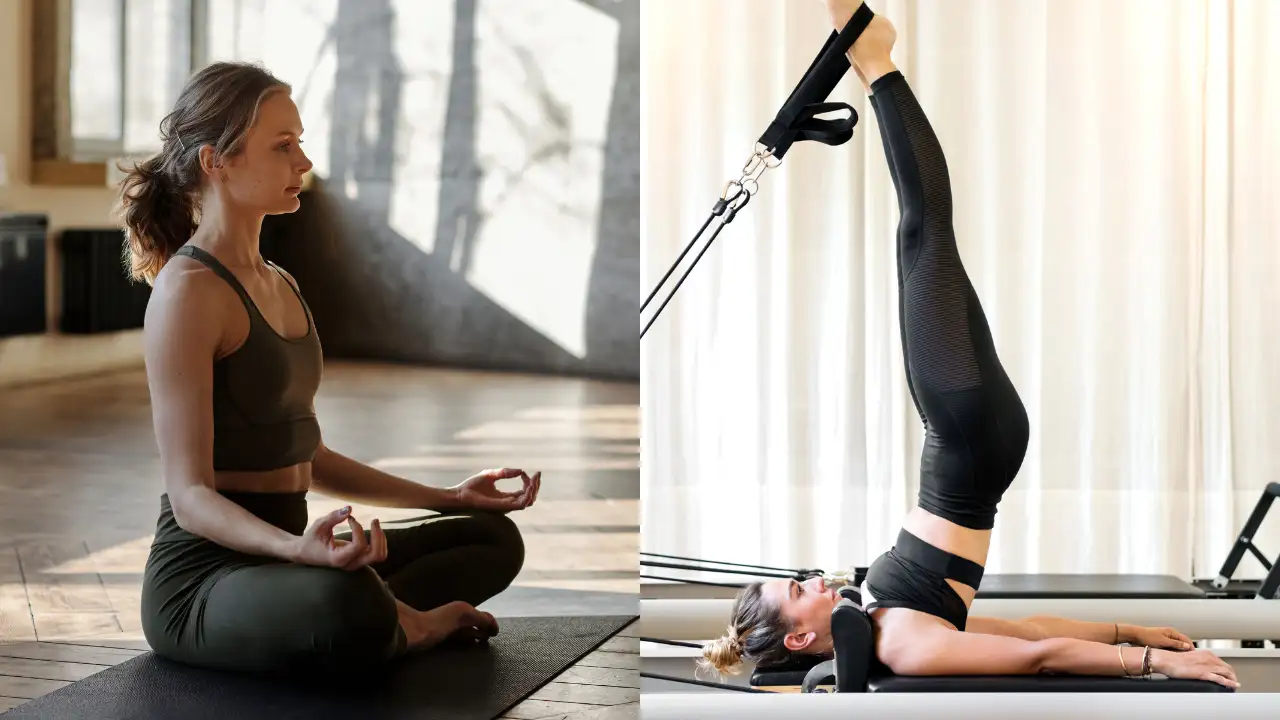Yoga is an ancient practice that originated in India over 5000 years ago. It's a lifestyle. Its core philosophy integrates physical movement called asanas, breath control called pranayama, and meditation to achieve a union of mind, body and spirit. While many modern yoga classes focus heavily on the asanas, the practice is deeply rooted in mindfulness and inner awareness for calmness and mental peace.
Pilates, on the other hand, is a much newer method developed by Joseph Pilates in the early 20th century. It was originally designed to rehabilitate injured soldiers. So Pilates emphasises controlled movements, controlled and precise movements that strengthen the core, which is referred to as the powerhouse, which improves alignment, posture and stability. And Pilates is all about the spine. So the muscles surrounding the spine are what you train with Pilates.
We speak with Mitushi Ajmera, a nutritionist and senior master fitness trainer, who shares her insights into how yoga and Pilates differ and why both may benefit you:
While yoga and Pilates may look very similar, they are different from each other. The primary distinction, she says, lies in focus. Yoga offers a holistic approach using flow, breath and stillness to improve physical and mental health. "It can be dynamic; the movements can be dynamic as well as static, where you're holding a pose for a longer time. If it's dynamic, it's a moving meditation that not only stretches and strengthens the body but also quiets the mind," Ajmera says.
Pilates, on the other hand, is more technique-driven. "There is a technique that goes into Pilates exercises. It focuses on muscular control, spinal alignment and efficient movement, which are done with precision. Typical Pilates sessions would require engaging the core muscles, the abdominal muscles and even the pelvic floor muscles. And when it's done on a reformer, which has resistance, it can add to the challenge. So that would require intense concentration on form and breathing patterns, which are quite different from yogic breathing techniques," she explains.
Now, who should choose what?
While everyone can do Pilates and yoga, there are certain things that one can keep in mind. "If you are looking for more stress relief, increased flexibility, or a deeper spiritual connection, yoga might be the best fit. It's ideal for those who want to integrate relaxation and mindfulness into their daily routine. For people who are really stressed out and want to slow down a bit, yoga is a very good practice," Ajmera tells us.
Then Pilates, she adds, may be more suitable if you're recovering from an injury, especially when it comes to lower back pain and all that. "Pilates is beautiful, as it's all about the spine. So this improves, and again, it's good for people who want to improve their posture or are required to improve their core strength and muscular balance," Ajemra says. So that is why Pilates is often recommended by physical therapists and fitness professionals for its rehabilitative benefits.
So, combining yoga and Pilates can create a comprehensive fitness and wellness routine, where yoga can enhance:
- Flexibility
- Reduce stress.
- Improve joint health.
Pilates offers:
- Muscular precision
- Stability
- Posture correction
- Relief from back pains, etc.
Together, they complement each other beautifully.
If someone does not have any injuries, then one can do both; otherwise, people with lower back pain, lower back injuries, or even hip injuries or knee injuries may have to stay away from yoga for some time and would have to do more Pilates. But otherwise, incorporating both practices can help improve athletic performance and offer a more balanced, intelligent approach to movement. Now, both practices are good for managing stress.
Get Latest News Live on Times Now along with Breaking News and Top Headlines from Health and around the world.
